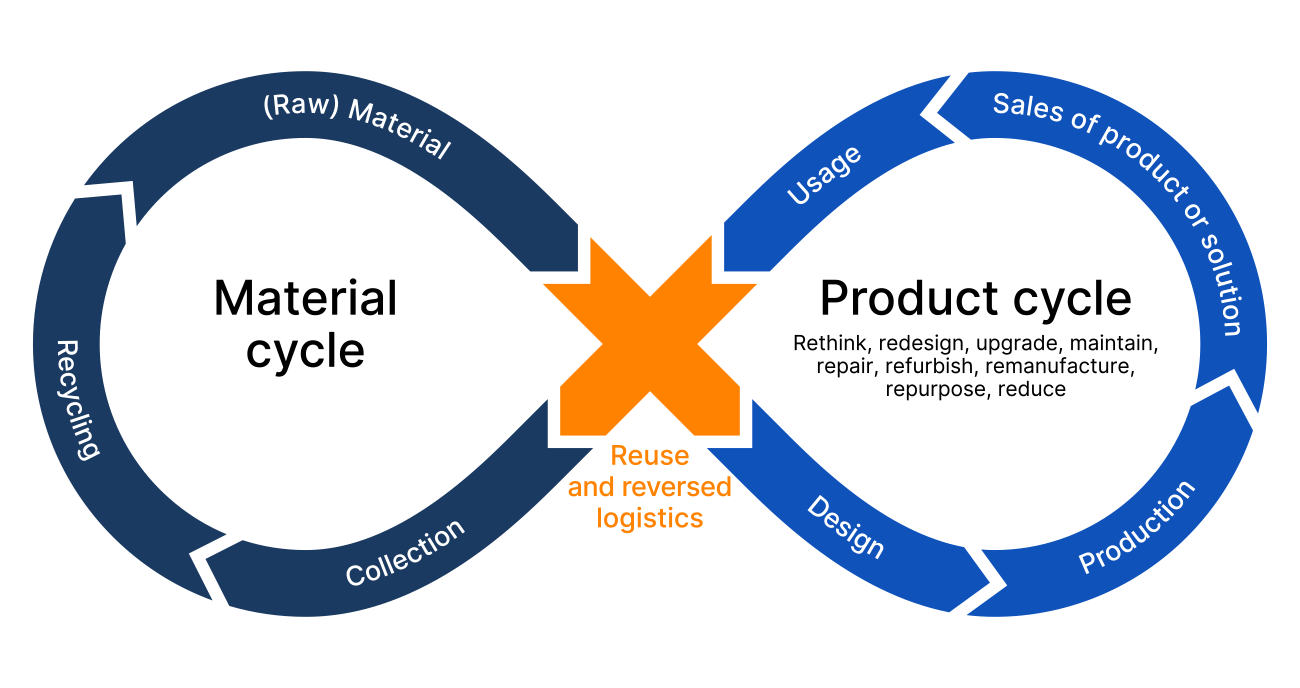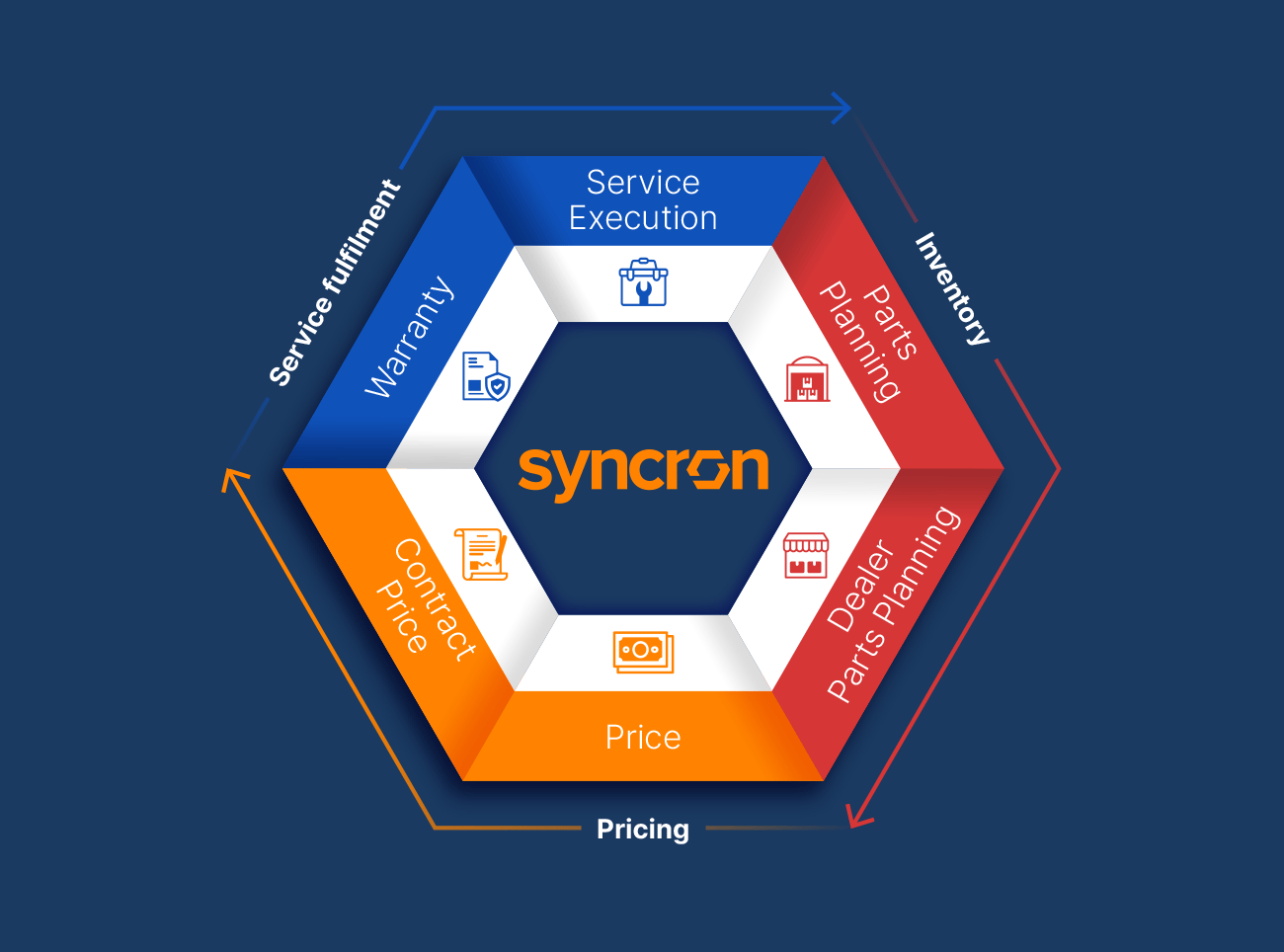The Circular Economy
Circularity in Manufacturing
Manufacturers play a pivotal role in the wider societal shifts to replace the traditional linear take-make-dispose model with a closed-loop circle where resources are repaired, reused, and recycled.
- Defining Circular Economy.
- Circularity in manufacturing.
- Product life extension & reverse supply chain networks.
The vast majority of the world’s manufacturers have a wealth of opportunities to make more money and increase returns to shareholders by using fewer resources.
McKinsey
• More from less: Making resources more productive
What is the Circular Economy?
The circular economy is an economic model that aims to keep resources in use for as long as possible, reducing waste and optimizing resource use. Instead of the traditional take-make-dispose model, the circular economy creates a closed-loop system where resources are reused.
-
Reduce, reuse, repair.
-
Recapture, refurbish.
-
Remanufacture, recycle.

What does circular economy mean for manufacturers?
Circularity can lower sourcing risks and costs, improve efficiencies, and open new markets but also mean designing products for repair and disassembly. More importance is placed on field maintenance and reverse supply chains to close loops and extend product life depending on complexity and value of product.
-
Lower sourcing risks and costs.
-
Open new markets.
-
Reverse supply chains close loops.

How does Syncron help?
As manufacturing shifts towards a circular economy, close collaboration and consolidation of product information is needed across the value chain. Syncron data platform optimizes reverse supply chain networks and streamlines the end-to-end repair and maintenance process.
-
Comply with environmental regulations.
-
Extend product lifespan.
-
Streamline product returns.

Resources
- Press Releases
Syncron Named a Major Player in the IDC MarketScape: Worldwide B2B Revenue and Profit Optimization Platforms 2025-2026 Vendor Assessment
6 Questions With… Mark Dabe
- Dealer Parts Planning
- Retail Inventory Management
Are You Ready for RIM? 5 Key Questions OEMs Should Ask
Why Running the Aftermarket Is a Smart Career Move
- Parts Planning
- Press Releases
Syncron Expands Global Value-Added Reseller Program with Tridant Partnership in Australia and New Zealand
Don’t Just Sell the Number. Sell the Truth.
- Dealer Parts Planning
- Retail Inventory Management
Retail Inventory Management: The Opportunity OEMs Can’t Afford to Miss
- Parts Planning
Aftermarket Winning Strategy: Straight From an NFL Playbook
- Agriculture
Why Net Farm Income Should Reshape Your Service Strategy
- AI
How Aftermarket Leaders Can Lead the AI Conversation
- Press Releases
Syncron Accelerates North American Expansion to Meet Rising Aftermarket Solution Demand
- Press Releases
Syncron Named a Major Player in IDC MarketScape for AI-Enabled Service Parts Management Applications and Awarded IDC 2025 CX CSAT Award in Aftermarket Service Operations
- Agriculture
Right to Repair: A Wake-Up Call for the Agricultural Aftermarket
The Aftermarket Is Having a Moment. Here’s the Data to Prove It.
- Agriculture
When Tractors Stop, So Does the Business: What Clarkson’s Farm Teaches Us About Aftermarket Parts
- Automotive
- Press Releases